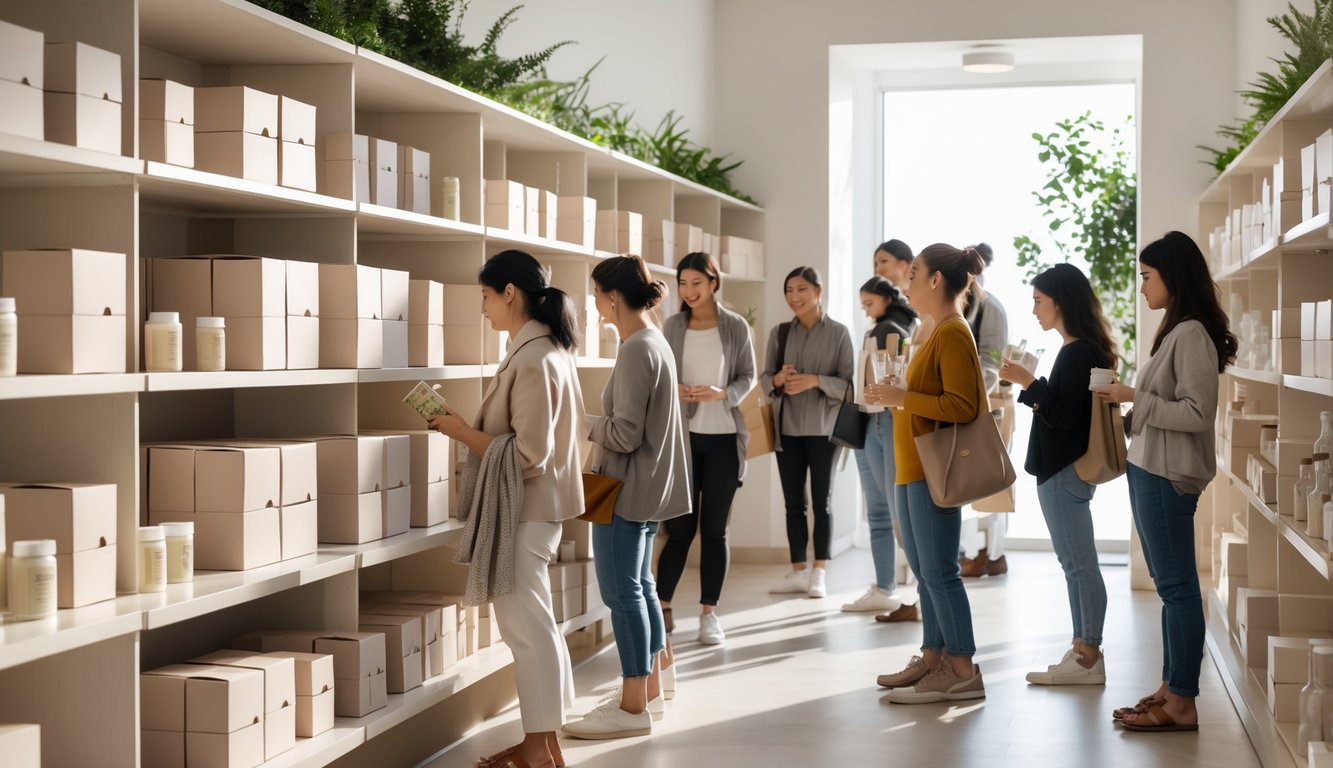
Impact on Purchasing Decisions
People aren’t idiots. Most of us expect sustainability, but nobody’s paying extra for a label that means nothing. There’s a McKinsey report saying products with real sustainable packaging claims sold up to 4.7% better. But honestly, if the packaging feels manipulative, I’m out.
Transparency—not just buzzwords—matters way more than any green sticker. Monica Majumdar at Wavemaker UK says brands have to balance quality and sustainability, but does that actually happen? Most shoppers want to believe a product helps the world, but only if it works and isn’t expensive—especially now, when groceries cost a small fortune.
People will absolutely switch brands over trust issues. Sustainability is just honesty in disguise: if brands hide details, I treat it like they lied, and I’m not alone—see this discussion. If I see “earth-friendly” and nothing else, I ignore it or complain online. But if a brand says “80% post-consumer recycled fiber, certified by SCS Global,” that actually changes my decision. No fluff, just facts. Still, can’t believe I care this much about boxes.
Frequently Asked Questions
Nobody’s grabbing neon granola bars anymore. Meanwhile, the CFO’s yelling about cardboard costs, but employees are still printing in color. McKinsey’s packaging people? Not even surprised—almost 70% of US consumers blame brands and packaging companies for sustainability problems, not themselves. Makes sense, honestly.
Why are companies simplifying their product packaging nowadays?
Honestly, I can’t count how many times I’ve heard some brand consultant moan about customers griping over plastic waste or, worse, those ridiculous origami folds you need a PhD to open. It’s gotten to the point where HR probably just pretends not to hear it. Half the people I know straight-up avoid anything with too much packaging—like, you ever get that weird climate guilt while unboxing? I get it. Here’s a link if you want numbers, but honestly, you don’t need a chart to see it happening.
One marketing manager told me they ditched metallic ink on their cans because the printers jammed every other day and logistics was ready to riot. Not even kidding.
What impact does minimal packaging have on consumer purchasing decisions?
My neighbor picked this super plain brown tube of cleanser over the flashy neon one just because, and I quote, “That looks like it’ll never biodegrade.” Price? Didn’t even ask. I mean, since when did boring packaging become a flex? All those runway-glam boxes? They just sit there. Meanwhile, the plain stuff disappears. People say they’re tired of fake eco-claims and shiny boxes that scream “landfill.” There’s this NielsenIQ thing about it if you want to spiral into more stats.
I asked my local store manager why the boring bags are always gone. He just shrugged and blamed TikTok. Maybe he’s right? I don’t know.
How is the trend of reduced packaging influencing brand loyalty?
Look, customers want brands to just get it. Why is printer paper wrapped in three layers? No one knows. I’ve seen people actually thank brands in reviews for not making them wage war on shrink wrap. And apparently companies are actually reading those comments and passing them up the chain, which is wild. McKinsey says almost 70% of buyers think brands should handle packaging, not them—so every time a company dials it back, people trust them more. Here’s the source if you care.
But, like, hand a six-year-old a toy in a plain box and watch the meltdown. Brand loyalty gets weird fast.
Can less flashy packaging be better for the environment, and if so, how?
Yeah, execs always talk about using less material, but honestly, the real win is cutting out all those shiny, impossible-to-recycle layers. Big brands have promised—supposedly—to go 100% recycled by 2030. Will that actually unclog landfills? Who knows. Here’s the roundup if you’re into corporate optimism.
My cousin says her compostable sleeves just dissolve if you look at them wrong, but hey, at least the box isn’t wrapped in a glittery bow anymore.
What strategies are brands using to attract customers with a more budget-conscious mindset?
Promos have gotten weirdly blunt. Big ugly letters: “50 sheets of toilet paper, no extra crap.” QR codes everywhere, which, let’s be real, I’m the only one scanning (and only because it’s my job). Instead of fancy packaging, you get slogans like “Less waste. Less cost. You win.” Supposedly it works—at least that’s what supplier decks claim.
Oh, and I caught a store putting their “budget” cereal in boring bags right at eye level. Those are gone by Friday. The fancy boxes? Still there, silently judging us all.
In what ways might plain packaging affect the perceived value of products?
So, plain packaging—does it just scream “cheap” to everyone? I keep thinking, obviously yes, but then someone in a focus group calls it “thoughtful.” Or “intentional.” I mean, are we talking about granola bars or luxury skincare? I’m not convinced. Some designer at this random food expo told me her minimalist nut butter jars cost way less to make—like, 30% less?—and suddenly everyone’s acting like it’s small-batch, hand-churned, whatever. I honestly don’t get it.
But walk into a fancy beauty store, and those flat, boring bottles? They just blend in with the generic stuff. I always end up squinting at the label, wondering if I’m about to buy something special or just another off-brand mistake. And honestly, don’t even get me started on wine labels. Who actually understands what’s going on there? I sure don’t.



